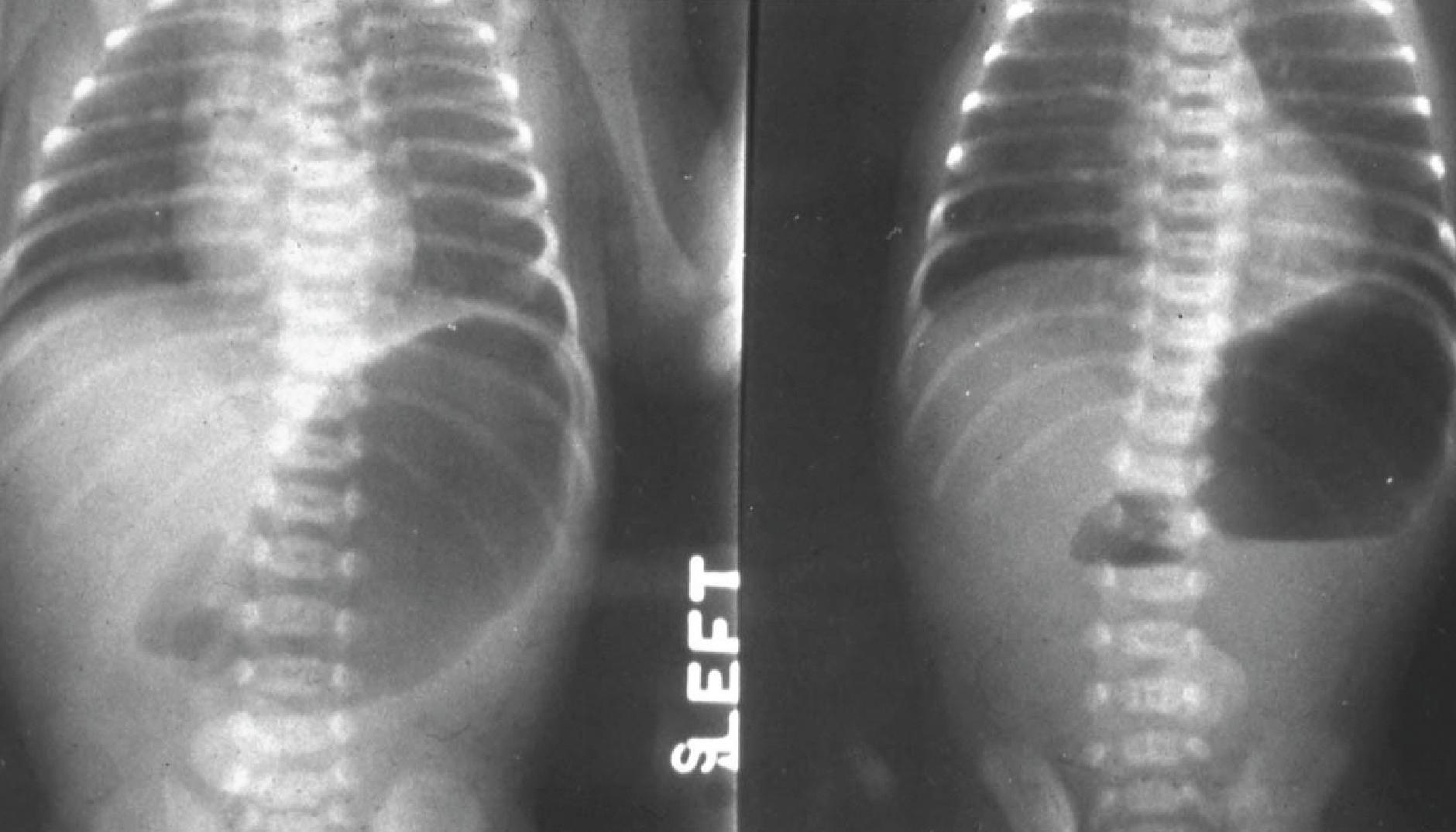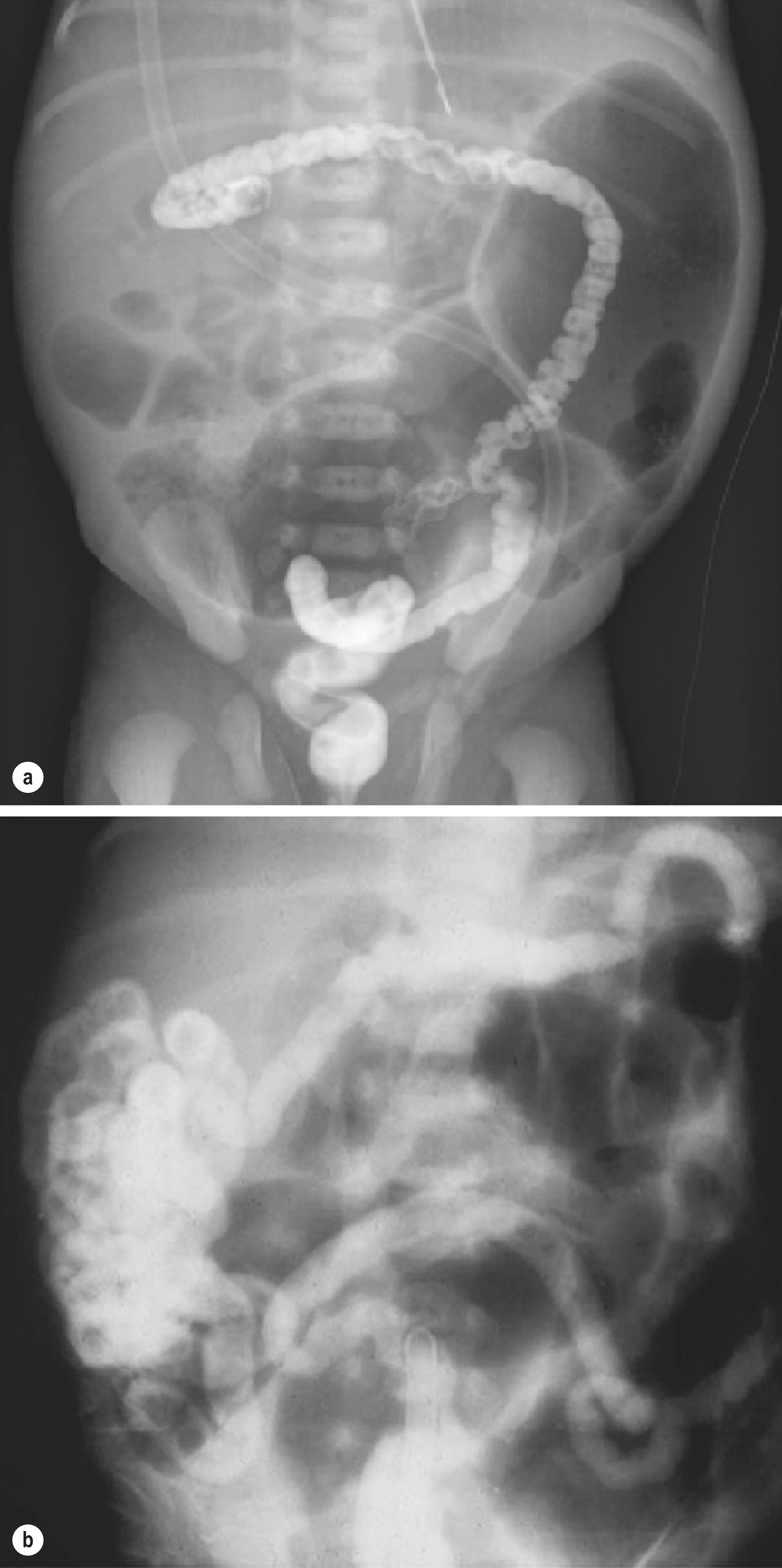Physical Address
304 North Cardinal St.
Dorchester Center, MA 02124
While paediatric surgery has increasingly become the domain of the subspecialist paediatric surgeon, adult general surgeons are still often faced with the challenges of assessing and managing children with surgical emergencies. The unique differences between adults and children must be taken into account when addressing every aspect of surgical management, including assessment, diagnosis, resuscitation and operative interventions. Children face a different spectrum of conditions, have different physiological responses to trauma, illness and surgical stress, and have different psychosocial needs.
This chapter will address the common abdominal paediatric surgical emergencies encountered by general surgeons. These will be categorised according to age: (i) neonates (up to 44 weeks post-gestational age), (ii) infants (1 month to 2 years of age) and (iii) children (2 years of age and older).
Routine prenatal ultrasonography has become the standard of care in many parts of the industrialised world, and has resulted in the detection of many congenital anomalies before birth. Common detectable anomalies relevant to the general surgeon include: abdominal wall defects, congenital diaphragmatic hernia, intestinal obstruction and intra-abdominal masses.
Whenever possible, these patients should be referred for prenatal consultation with obstetrics, neonatology and paediatric general surgery. In most cases, delivery should occur at a hospital with a neonatal intensive care unit and paediatric surgical service. If this is not possible, they should be immediately transferred following delivery and resuscitation.
Intestinal obstruction is the most common abdominal emergency in the neonatal period, and is usually due to a congenital, developmental or genetic anomaly.
Assessing neonatal patients for obstruction requires a thorough history, including the nature of any vomiting and the presence or absence of abdominal distension. Since neonates are unable to verbalise, surgeons must gather as many clues as possible from the prenatal, perinatal and family historical details ( Table 18.1 ).
| Prenatal history | Previous pregnancies (complications and outcomes) Maternal gestational illnesses (e.g. gestational diabetes, pregnancy-induced hypertension) Screening ultrasonography (dates and findings) Other prenatal investigations and outcomes (e.g. maternal alpha-fetoprotein/betaHCG/oestrogen levels, chorionic villous sampling, amniocentesis) |
| Perinatal history | Weeks of gestation Induced or spontaneous labour Complications of delivery APGAR scores |
| Neonatal history | Complications Infections Feeding history (initiation, type, rate achieved) Passage of meconium in the first 24 hours of life Other anomalies identified |
| Family history | Maternal and paternal health Previous congenital anomalies Cystic fibrosis Consanguinity |
Examination of neonates with suspected intestinal obstruction should start with vital signs and an assessment of the level of resuscitation required. Certain forms of obstruction can cause severe dehydration or sepsis, which will need to be addressed early. Dysmorphic features may give clues to syndromes in which obstruction is common. The abdominal examination should make note of discolouration, distension and signs of peritoneal inflammation such as guarding and rigidity. It is important to look for an incarcerated inguinal hernia as the cause of obstruction (see later). A thorough evaluation of the perineum must also be performed to ensure normal location and patency of the anus.
Routine blood work including electrolytes and complete blood count are helpful in assessing the level of dehydration as well as in determining if electrolyte disturbances or sepsis are contributing to the presentation. It should be kept in mind that serum creatinine in the newborn reflects the mother’s levels, and may not be helpful in assessing the neonate’s renal function.
Abdominal radiography should be the initial imaging modality for neonates with possible intestinal obstruction. Typically, infants with duodenal obstruction have a ‘double-bubble’ appearance ( Fig. 18.1 ), whereas those with distal intestinal obstruction will have multiple dilated bowel loops. It is impossible to differentiate distal small-bowel obstruction from colonic obstruction based on the plain abdominal radiograph in neonates, as the haustral markings seen in adults are not visible in this age group.

A contrast study is often required to definitively diagnose the aetiology of intestinal obstruction. If malrotation is suspected, an urgent upper gastrointestinal contrast study should be performed first. Once this has been excluded, a contrast enema can be done to exclude distal pathology if this is indicated. For those infants with distal obstruction on plain radiograph, a contrast enema will help to differentiate the three most common causes of distal obstruction: meconium ileus, jejuno-ileal atresia and Hirschsprung disease (HD; Fig. 18.2 ). Water-soluble contrast should always be used instead of barium, to avoid the possibility of barium leaking into the abdominal cavity should a perforation occur, and also because water-soluble contrast is more effective in relieving the obstruction in cases of meconium obstruction.

Neonates with suspected intestinal obstruction should be transferred in a temperature-controlled transport isolette to a specialised paediatric surgical unit for evaluation and definitive management. Resuscitation should begin as soon as the patient is assessed and should continue during transport. Nasogastric decompression with a large-calibre nasogastric tube (size 8–10 French) is important to improve ventilation, monitor resuscitation and limit bowel distension and subsequent ischaemia.
This anomaly is characterised by a gap in the oesophagus, resulting in a blind-ending proximal pouch. In 90% of cases, the distal oesophagus is connected to the back of the trachea as a tracheo-oesophageal fistula. Oesophageal atresia is usually first suspected when the baby has difficulty swallowing saliva and may have coughing or respiratory distress during the first feed. Intubation may be needed if ventilation or respiration is significantly impaired. The diagnosis is confirmed by inability to pass a 10–12 French nasogastric tube. This tube should be left in the proximal oesophageal pouch and placed on continuous suction to reduce aspiration of secretions. Operative repair should only be performed by an experienced paediatric surgeon and involves division of the fistula and end-to-end anastomosis of the proximal and distal oesophagus. Associated cardiac anomalies are common with this condition and should be ruled out prior to the baby receiving a general anaesthetic.
Cystic fibrosis (CF) is the most common autosomal recessive disorder in Caucasian children. The disease alters the regulation of chloride transport in epithelial cells resulting in a variety of clinical manifestations. About 10–15% of children born with CF will develop meconium ileus, in which the meconium becomes sticky and causes intraluminal obstruction. This can further lead to complications of volvulus, atresia or perforation. In addition, meconium ileus may occasionally occur in children without CF. A diagnostic work-up, including both sweat chloride determination and genetic studies, must be done on all children with meconium ileus.
Abdominal radiograph may show distal intestinal obstruction with a bubbly appearance in the right lower quadrant due to gas mixing with the viscous meconium ( Fig. 18.2a ). There may also be intraperitoneal calcification if in utero perforation has occurred.
Following resuscitation and nasogastric decompression, a water-soluble contrast enema will reveal a microcolon (small calibre) and multiple meconium plugs in the terminal ileum ( Fig. 18.2a ). In approximately 50% of cases, the contrast enema will relieve the obstruction. If progress is made, but the infant remains obstructed after the initial enema and is otherwise stable, the procedure can be repeated. If the contrast enema is unsuccessful in relieving the obstruction and/or no further progress has been made, a laparotomy must be done. If there is no volvulus or perforation, enterotomies are made and mechanical washout is performed. Complications of volvulus, acquired atresia or perforation are managed by intestinal resection with or without a stoma, depending on the condition of the bowel and of the patient.
Atresia and stenosis can occur at any point in the alimentary canal. The two prominent aetiological theories are failure of recanalisation of the intestine during foetal development, or an ischaemic event in utero . Early resuscitative measures should be initiated and confirmatory diagnosis can usually be made with either upper or lower gastrointestinal contrast studies. The presence of a ‘double-bubble’ sign on abdominal radiograph is considered diagnostic for duodenal atresia ( Fig. 18.1 ), although this finding associated with distal gas may also be due to stenosis, duodenal web or malrotation. Trisomy 21 is present in one-third of children with duodenal atresia. Patients with distal atresia will typically have multiple dilated loops of bowel on the plain abdominal radiograph. Although a diagnosis of proximal obstruction can be confidently made based on plain radiography, those with distal obstruction should always undergo water-soluble contrast enema to differentiate atresia from meconium ileus or HD ( Fig. 18.2a –c).
Since most infants with intestinal atresia are stable once decompressed and resuscitated, we recommend transfer of such neonates to a facility with paediatric surgical expertise. Most of these anomalies are treated with a primary anastomosis. If there is significant dilatation of the proximal segment, tapering enteroplasty should be done as the dilated bowel tends not to have effective peristalsis.
Become a Clinical Tree membership for Full access and enjoy Unlimited articles
If you are a member. Log in here